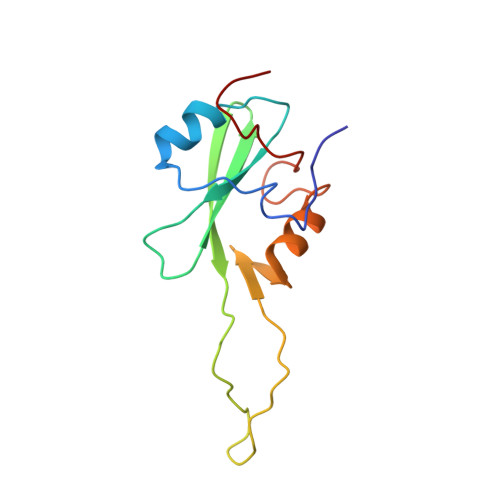Structural basis for the transforming activity of human cancer-related signaling adaptor protein CRK.
Kobashigawa, Y., Sakai, M., Naito, M., Yokochi, M., Kumeta, H., Makino, Y., Ogura, K., Tanaka, S., Inagaki, F.(2007) Nat Struct Mol Biol 14: 503-510
- PubMed: 17515907
- DOI: https://doi.org/10.1038/nsmb1241
- Primary Citation of Related Structures:
2DVJ, 2EYV, 2EYW, 2EYX, 2EYY, 2EYZ - PubMed Abstract:
CRKI (SH2-SH3) and CRKII (SH2-SH3-SH3) are splicing isoforms of the oncoprotein CRK that regulate transcription and cytoskeletal reorganization for cell growth and motility by linking tyrosine kinases to small G proteins. CRKI shows substantial transforming activity, whereas the activity of CRKII is low, and phosphorylated CRKII has no biological activity whatsoever. The molecular mechanisms underlying the distinct biological activities of the CRK proteins remain elusive. We determined the solution structures of CRKI, CRKII and phosphorylated CRKII by NMR and identified the molecular mechanism that gives rise to their activities. Results from mutational analysis using rodent 3Y1 fibroblasts were consistent with those from the structural studies. Together, these data suggest that the linker region modulates the binding of CRKII to its targets, thus regulating cell growth and motility.
Organizational Affiliation:
Department of Structural Biology, Graduate School of Pharmaceutical Sciences, Hokkaido University, Sapporo, Hokkaido 060-0810, Japan.













